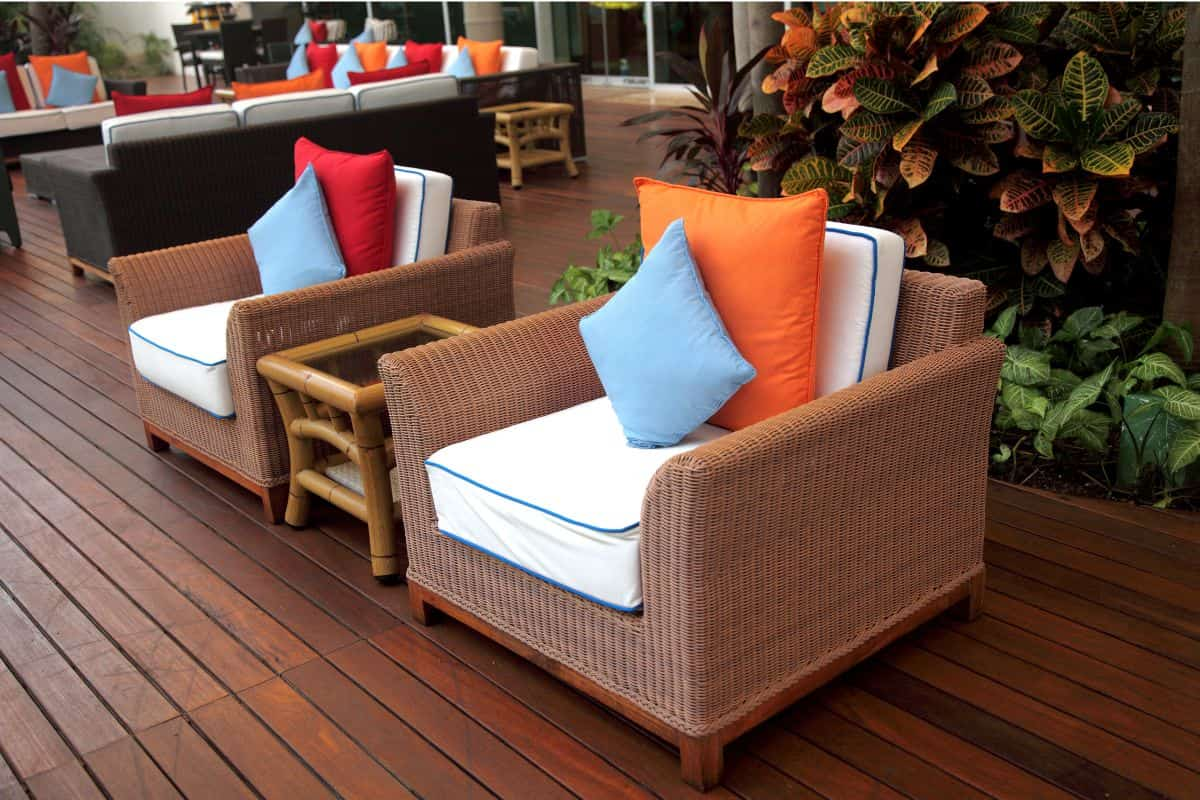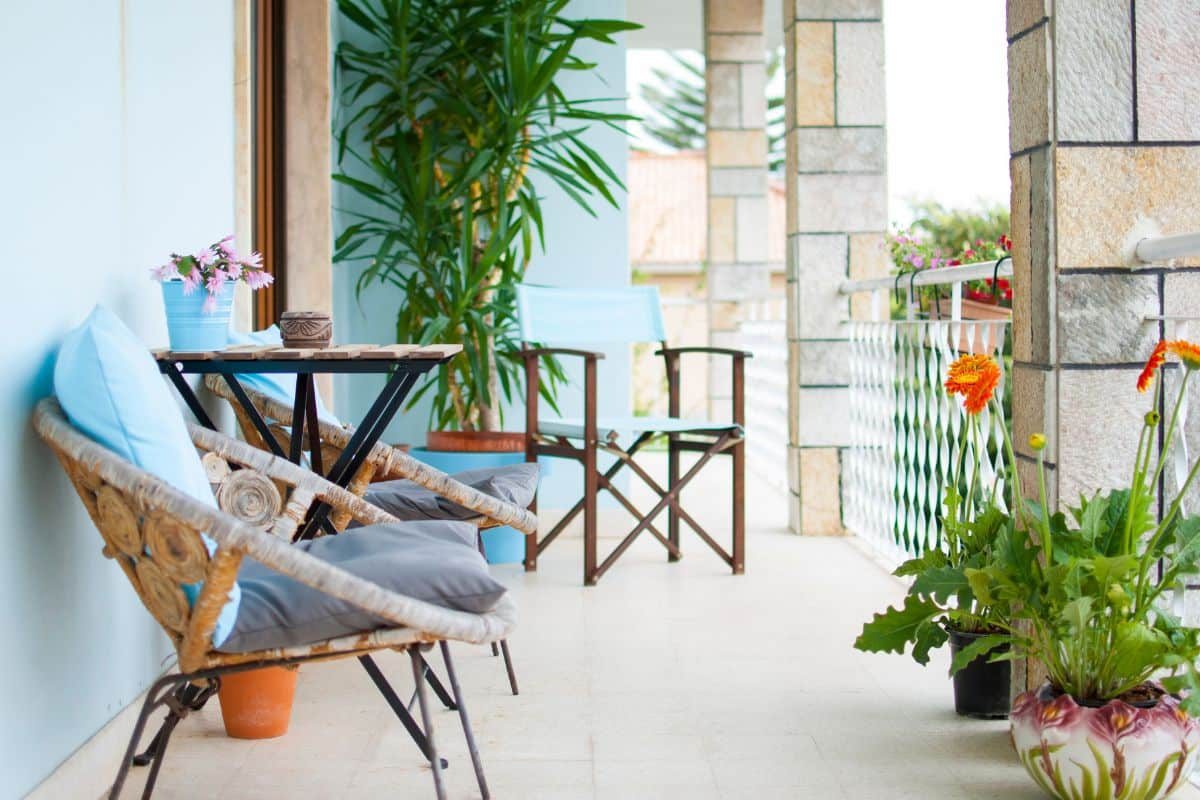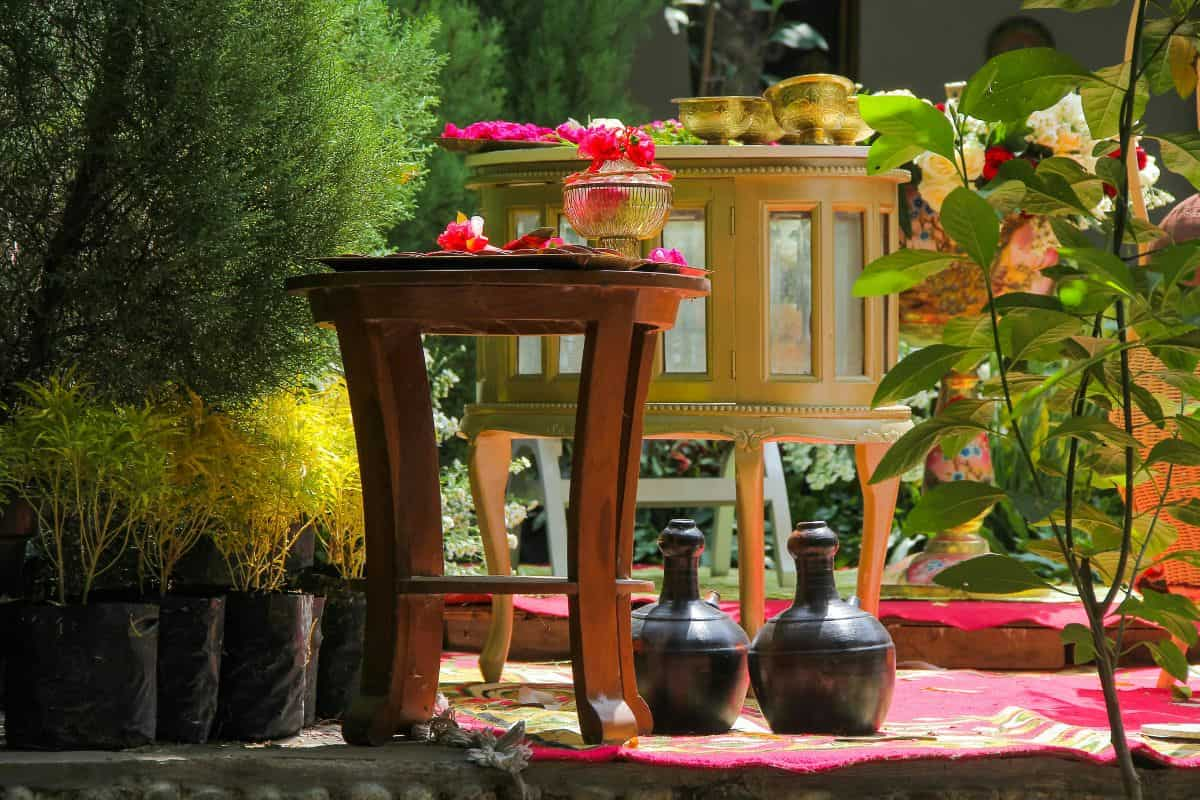



Mixing different coloured furniture in your garden can be a great idea to create a cheerful and welcoming atmosphere. However, in order to achieve a balanced result, you need to follow certain guidelines such as having a well-defined colour palette or considering the materials.
For example, when choosing a dining table for your garden, it is important that it combines aesthetically not only with the chairs, but also with the natural elements of the environment.
So that you don’t have any doubts about how to combine furniture in different colours, in this post we explain which tones combine best, what mistakes you shouldn’t make and what tips to apply to achieve the best result.
Tabla de contenidos
TogglePaying attention to the colour scheme of your furniture is important to create a harmonious and welcoming atmosphere in your garden. This is because colours directly influence the perception of size, light and style in any space.
Thus, a balanced colour palette can enhance the natural beauty of the surroundings, integrating the furniture with the plants and landscape and enhancing the sense of order and well-being. However, the wrong combination can create a cluttered and uncomfortable environment.



It is also important to take into account the resistance of the materials and how the sun can alter the colours over time. In this sense, it is essential to know the characteristics of the different materials, for example the difference between wicker and rattan, in order to know which colours to choose in each case.
In outdoor spaces such as gardens, terraces or balconies, the most suitable colours are those that harmonise with nature and resist exposure to the sun.
Neutral tones such as white, beige or light grey are an excellent base that provides luminosity, is timeless and combines with almost everything. To add life and energy, you can incorporate small details in olive green, turquoise blue, mustard or terracotta, which evoke natural elements such as water, earth or leaves. Wood tones also work very well in this sense, providing warmth and blending in perfectly with the surroundings.
If you are looking for a bolder style, you can go for intense colours such as fuchsia, coral or yellow in the decorative details. The key in this case is to maintain a balance: use a neutral tone as a base and add touches of bold colour to give personality without overloading the whole.
Mixing styles and combining different coloured furniture in an outdoor space may seem like a challenge, but by following a few simple tips you can create a balanced, original atmosphere with a lot of personality.
Below, we explain how you can mix different coloured furniture in your garden step by step.

The first step in combining different coloured furniture is to define a base colour palette, with two or three main tones to guide you. If you’re not sure which colours to choose, you can draw inspiration from your surroundings, such as earthy colours.
Also, if your space is small, a light base – such as white, soft grey or beige – will help to make it look larger and brighter. You can then incorporate other furniture or accessories in brighter tones to give it personality.
Within your colour palette, you will need to choose which shades to use as the main colour and which as secondary colours. It is important that you never use more than two or three colours to avoid the result looking cluttered.
A good option is to choose a dominant colour for larger pieces of furniture and combine it with accent colours for smaller or decorative pieces. For example, if you choose grey as the main colour, you can add pastel chairs, mustard yellow cushions or green side tables.
Different materials also add colour and texture, making them a useful resource to combine in a natural way. Materials such as synthetic rattan, metal or textiles can have their own colours that add to the composition.
Using contrast to enliven the whole is also an alternative, although it should be used sparingly. In this sense, combining warm colours (reds, oranges, yellows) with cool colours (blues, greens, lilacs) can work very well if done in a balanced way.
For example, a blue table with soft yellow chairs creates a very visual and summery contrast. To avoid a too strident result, you can add some neutral elements such as a white umbrella or a terracotta planter.
When combining different coloured furniture, textiles are your greatest allies to introduce touches of colour that brighten up the atmosphere. Cushions, blankets, covers, paintings, flower pots and even parasols allow you to play with different tones and patterns.
They are also easy to replace if you get tired of the colour or want to adapt the atmosphere to another season of the year. Experiment with different combinations until you find the one that best suits your style.
Finally, another key to making your colour mix work is to maintain a balanced proportion between the different tones, since if you have too many bright colours together the space can look overloaded.
A good trick is to apply the 60-30-10 rule: 60 % of a dominant colour, 30 % of a secondary colour and 10 % of an accent colour. This formula helps to distribute the colours harmoniously and tastefully.

Now that you know how to combine furniture of different colours, we are going to tell you about the mistakes you should never make if you want your space to maintain harmony and balance:
Not sure which colours go well in your garden? Come and visit us and we will help you find the shades that best suit your preferences to help you create the perfect ambience.



